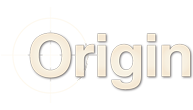The key features of CheckMate CMM programming are:
1. Common language to offline program CMMs of multiple vendors. Programs are ready to run when parts arrive to maximize your CMM utilization. Many companies report that having a common programming language for multiple systems and the offline capability provides more throughput with less machines. (return to Programming page)
2. Program in one coordinate system and report in another regardless of CMM configuration or part to table orientation. When Origin’s CMTrans utility is used with CheckMate Programming, CAD data can be rotated and translated to a localized coordinate system for programming. After the part is measured results can be reported in either the original or the local coordinate system without remeasuring the part. This feature is invaluable where there is a need to report results in both coordinate systems without remeasuring the part. In the automotive industry this feature is used for “car or body to die coordinates” and in the aerospace industry it is used for “ship to local coordinates”. (return to Programming page)
3. The unique ability to scale CMM programs and measurement data. Additionally, the CMTrans utility has unparalleled capability in scaling both data and CMM programs. In investment casting applications for example a single program can be used for both the part and the wax because you can apply scaling either uniformly or differentially along each axis. If there was any doubt as to whether shrink was applied correctly when producing the mold for the wax, measuring both will eliminate or confirm any error.
In environments where dimensional measurement equipment (DME) includes laser trackers, theodolites, articulating arms or scanning lasers, you can program soft gauges. This enables you to load the data and report full inspection results to specified GDT&T for features and construction callouts.(return to Programming page)
4. Load existing DMIS and a limited number of native language CMM programs. When CheckMate loads DMIS it does an extensive amount of “healing” to overcome the incompatibilities of the DMIS output from vendor to vendor. The ability to load these programs is huge time saving for both CMM programming and soft gauging applications.
For CMM applications, programs generated in the software from one vendor can be loaded and output to the machine from a different vendor saving the investment on time of rewriting the program from scratch. When you create soft gauges and you have a CMM program available, it can be loaded and used as the basis of the soft gauge. This eliminates the need for further programming.(return to Programming page)
